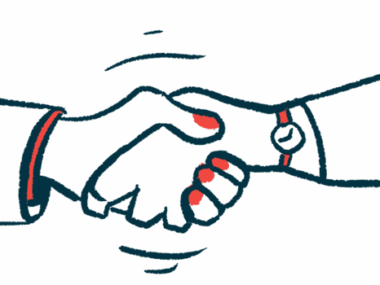Fewer seizures, better behavior seen with STK-001 treatment for Dravet
Update on findings in two Phase 1/2a clinical trials and extension studies
Written by |

STK-001, an investigational treatment for children and adolescents with Dravet syndrome, markedly reduced seizure frequency and improved cognition and behavior, according to new findings in Phase 1/2a clinical trials.
“The substantial and sustained reductions in seizure frequency and improvements in cognition and behavior observed in our STK-001 clinical studies give us confidence that we are addressing the root cause of Dravet syndrome,” Barry Ticho, MD, PhD, chief medical officer for Stoke Therapeutics, the therapy’s developer, said in a company press release.
Data were presented at the American Epilepsy Society 2023 Annual Meeting, held Dec. 1-5 in Orlando, Florida.
A pharmacological modeling analysis also suggested that higher brain levels of STK-001 led to greater seizure reductions, which “provides additional confidence in the clinical benefits observed among patients treated … at higher doses and for longer periods of time,” Ticho said.
STK-001 aims to be a first disease-modifying treatment for Dravet syndrome
STK-001’s safety, pharmacological properties, and early evidence of efficacy are being evaluated in Dravet patients, ages 2 to 18, in two parallel, open-label Phase 1/2a clinical trials: MONARCH (NCT04442295) in the U.S. and ADMIRAL (ISRCTN99651026) in the U.K.
Injected into the cerebrospinal fluid surrounding the brain and spinal cord, STK-001 is designed to increase the production of a key protein in the NaV1.1 sodium channel in the brain. In most patients, disease-causing mutations affect NaV1.1, leading to frequent and lasting seizures as well as developmental delays, problems with movement and balance, and delayed speech.
“Dravet syndrome goes far beyond seizures, and as children grow up, they experience a complex array of life-altering challenges,” said Joseph Sullivan, MD, a professor of neurology and pediatrics and director of the Pediatric Epilepsy Center of Excellence at the University of California San Francisco.
At the meeting, Sullivan presented two years of data from the BUTTERFLY natural history study, which collected information on how Dravet syndrome affected 36 children and adolescents over time. Despite treatment with the best available anti-seizure medicines — including Onfi (clobazam), Fintepla (fenfluramine), Diacomit (stiripentol), Depacon (valproic acid), Epidiolex (cannabidiol), and Keppra (levetiracetam) — no changes in seizure frequency or in adaptive behaviors, as assessed with the Vineland Adaptive Behavior Scale – third edition (VABS-III), were reported over those two years.
Consistent with interim, three-month BUTTERFLY results, two-year improvements in clinical measures of Dravet patients were far below those seen in unaffected age-matched peers, and these gaps in development continued to grow. Convulsive seizure over two years also continued at a similar frequency to that observed at the study’s beginning.
“On average, patients enrolled in the BUTTERFLY natural history study were taking 3.5 anti-seizure medicines,” Sullivan said. “Despite this, they continued to experience similarly high rates of seizure frequency … and fell further and further behind their neurotypical peers in aspects of cognition and behavior, including their ability to communicate and use gross motor and fine motor skills.”
Findings also “highlight the critical need for a new approach to treating this disease, one that can improve the treatment of seizures and go beyond that to address the debilitating cognitive and behavioral aspects of this disease,” he added.
Sustained drop in seizure frequency seen with STK-001 at 70 mg doses
An update on MONARCH and ADMIRAL data was presented in a poster by Helen Cross, PhD, professor and the Prince of Wales’s Chair of Childhood Epilepsy and head of the developmental neuroscience program at University College London.
In line with a recent Stoke announcement, patients with severe and treatment-resistant disease who were treated with two or three injections of STK-001 at a high dose of 70 mg showed a profound, sustained reduction in convulsive seizure frequency. Single and multiple doses up to 70 mg were generally well tolerated.
Patients who complete the MONARCH trial may continue treatment in the SWALLOWTAIL (NCT04740476) open-label extension (OLE) study, and those completing ADMIRAL can join the LONGWING (ISRCTN12811235) OLE.
About 90% of these studies’ patients had enrolled in one of these OLEs, Archana Desurkar, MD, a pediatric neurologist at Sheffield Children’s Hospital National Health Service Foundation Trust in the U.K., noted in a separate poster presentation.
Current data showed sustained reductions in convulsive seizure frequency over the course of STK-001 treatment, alongside substantial improvements in various assessments of cognition and behavior over one year. Multiple doses (up to eight) of up to 45 mg given every four months were generally well tolerated.
“These findings are in stark contrast to the data from our two-year natural history study that show a lack of improvement among patients who are taking the best available anti-seizure medicines,” Ticho said.
Data from 72 patients treated in MONARCH, ADMIRAL, and the SWALLOWTAIL OLE were entered into a pharmacological modeling study also showed that higher brain levels of STK-001 significantly associated with greater reductions in seizure.
According to its researchers, findings in this model “will help in identifying the optimal dosing regimen for a Phase 3 study”.
“The comprehensive set of data being presented at AES are giving us a very good understanding of how STK-001 works and its potential to address not only seizures, but many of the non-seizure effects of Dravet syndrome,” Ticho added.







